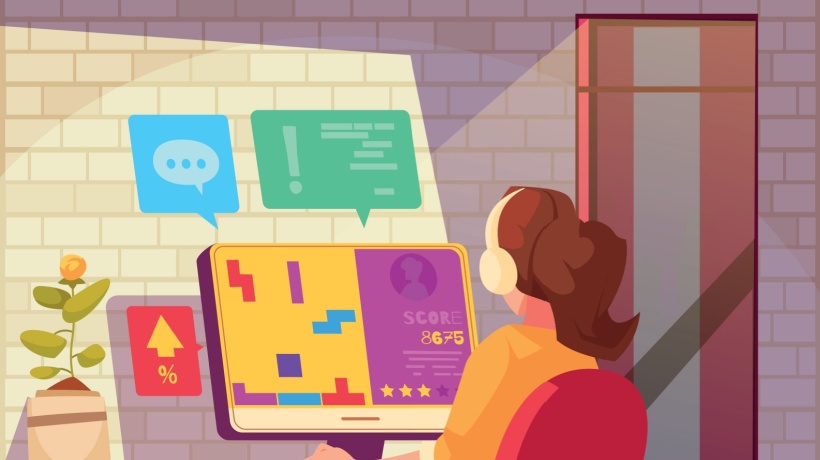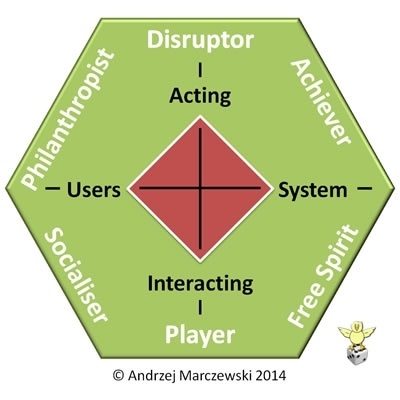Better Gamification Mechanics For Your Learners!
In the ever-evolving gamification landscape, understanding and engaging users effectively is paramount. Andrzej Marczewski's user types, as outlined in the article "Introduction to Gamification Part 8: User Types", offers a valuable framework for segmenting and engaging users in gamified systems. This article delves into how Marczewski's user types model can be harnessed to identify gamification users, tailor game mechanics, and create enriching learning experiences.
Understanding Marczewski's User Types Model
Marczewski's user types model is a comprehensive classification system that categorizes users based on their gamification preferences and behaviors within gamified systems. The model identifies several user types, each with unique motivations and gaming profiles. Marczewski's brilliance stemmed from the connection between Marczewski's user types and the RAMP (relatedness, autonomy, mastery, and purpose) intrinsic motivation model. These types include:
- Socializers
They find motivation in forming connections and social interactions (relatedness). They thrive on creating a sense of relatedness. - Free Spirits
On the other hand, these are driven by freedom and the desire for self-expression (autonomy). Their passion lies in creation and exploration. - Achievers
They draw their motivation from the pursuit of proficiency (mastery). They actively seek opportunities to learn and grow, constantly challenging themselves. - Philanthropists
They derive their motivation from a sense of meaning and intention (purpose). They are altruistic individuals who aim to enrich others' lives without expecting any rewards. - Players
These, however, are primarily motivated by extrinsic rewards. The prospect of collecting incentives guides their actions, focusing mainly on personal gain. - Disruptors
They are fueled by a desire for change. They seek to disrupt systems directly or indirectly (through other users) to bring about positive or negative transformations.
Let's take these categories with a grain of salt. These user types provide broad classifications for segmenting individuals, but players and learners can display a mix of traits. For instance, newcomers may initially pursue mastery, but as they progress, their focus might shift toward social interaction and item collection.
Leveraging Marczewski's User Types In Gamification
Identifying User Types
The first step in applying Marczewski's user types model is to identify the user types present within your gamified system. This can be accomplished during the ADDIE model analysis phases through user surveys, behavioral analysis, or user feedback. By understanding the dominant user types in your audience, you can tailor your gamification strategies accordingly.
Customizing Game Mechanics
Once you've identified the prevalent user types, you can align your game mechanics with their motivations. For socializers (relatedness), create social features like chat rooms, forums, and friend lists to encourage interactions and foster a sense of community within the gamified system. For achievers (mastery), create achievement badges, leaderboards, and progressively challenging tasks that push users to continuously improve their skills and knowledge.
Designing Learning Experiences
By integrating Marczewski's user types, Instructional Designers can create more effective and engaging learning experiences. For example, free spirits (autonomy) will enjoy creative challenges, sandbox environments, and customization options, allowing them to express themselves and explore without constraints. For players (extrinsic rewards), create a points-based system, virtual currency, and tangible rewards like discounts or exclusive content for completing tasks, incentivizing users to achieve personal goals.
Benefits Of Marczewski's User Type Integration
Gamification is far from a one-size-fits-all solution. Just as in tailoring effective learning experiences, it's essential to comprehend the target audience not only in terms of their learning requirements but also through the lens of motivation. By accurately recognizing Marczewski's user types and selecting the most suitable game mechanics, several advantages can be realized:
- Enhanced engagement
Tailoring gamification to user types increases user engagement by appealing to individual motivations. - Improved learning outcomes
In learning settings, customized gamification fosters better retention and comprehension of content. - Community building
Encouraging socializers and philanthropists to interact fosters a sense of belonging and mutual support. - Increased user satisfaction
Users who feel understood and catered to are more likely to remain active and satisfied within a gamified system. - Behavior prediction
By recognizing user types' behavior patterns, gamification and Instructional Designers can anticipate user actions and adapt strategies accordingly.
Conclusion
Marczewski's user types model is a powerful tool for understanding and engaging users effectively in gamified systems. Organizations can unlock the full potential of gamification by identifying prevalent user types, customizing game mechanics, and designing tailored learning experiences. Recognizing and catering to the diverse motivations of users is the key to success in the world of learning and gamification.









